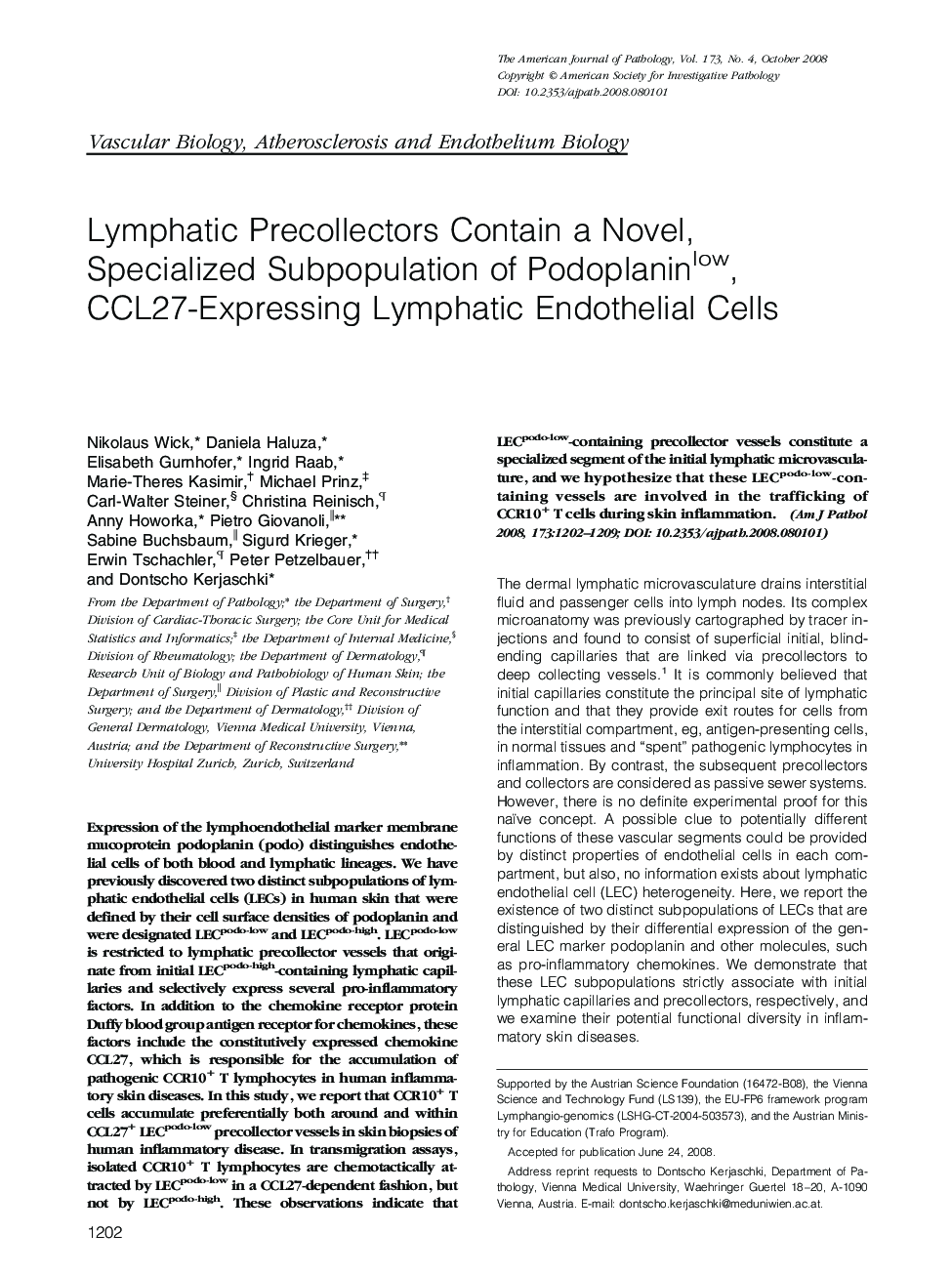| Article ID | Journal | Published Year | Pages | File Type |
|---|---|---|---|---|
| 5938017 | The American Journal of Pathology | 2008 | 8 Pages |
Expression of the lymphoendothelial marker membrane mucoprotein podoplanin (podo) distinguishes endothelial cells of both blood and lymphatic lineages. We have previously discovered two distinct subpopulations of lymphatic endothelial cells (LECs) in human skin that were defined by their cell surface densities of podoplanin and were designated LECpodo-low and LECpodo-high. LECpodo-low is restricted to lymphatic precollector vessels that originate from initial LECpodo-high-containing lymphatic capillaries and selectively express several pro-inflammatory factors. In addition to the chemokine receptor protein Duffy blood group antigen receptor for chemokines, these factors include the constitutively expressed chemokine CCL27, which is responsible for the accumulation of pathogenic CCR10+ T lymphocytes in human inflammatory skin diseases. In this study, we report that CCR10+ T cells accumulate preferentially both around and within CCL27+ LECpodo-low precollector vessels in skin biopsies of human inflammatory disease. In transmigration assays, isolated CCR10+ T lymphocytes are chemotactically attracted by LECpodo-low in a CCL27-dependent fashion, but not by LECpodo-high. These observations indicate that LECpodo-low-containing precollector vessels constitute a specialized segment of the initial lymphatic microvasculature, and we hypothesize that these LECpodo-low-containing vessels are involved in the trafficking of CCR10+ T cells during skin inflammation.
